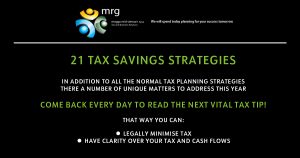Posts Categorized: News
Re-instated commercial rent relief

On 28th July, the Victorian state government announced a re-introduction of a covid rent relief system for commercial tenancies.
A business must have suffered a 30% decline in turnover to qualify. We are still awaiting legislation so it is not yet known what period is measured.
The rental relief is commensurate with the decline in turnover. So as per the government’s example, if your business suffered a 40% decline in turnover, then you your business will be entitled to a 40% reduction in rent.
Please contact us if you need help in quantifying this.
It is also unclear as to whether the rent reduction is in part a deferment. We will post an update when details come to hand.
Where a landlord doesn’t agree to provide the requested rent deduction then the matter can be referred to Victorian Small Business Commission.
To support landlords who have suffer from their decline in income, assistance can be received under a $80 million Landlord Business Support Package. One would think that allocation will be quickly exhausted so we would recommend applications being made properly.
Survive & Thrive webinar

In these difficult times it is crucial to have your finger on the right button.
And with that in mind we welcome you to join our next Survive & Thrive webinar.
The webinar will feature the usual Things To Do over the next month and a case study section (which this time will be planning).
Our guest speaker Peter Sleight will discuss Eating for Better Health.
The webinar will run for 25 minutes from 5.30pm on Thursday 5th August. You can reserve your place by clicking here clicking here
We look forward to seeing you on the night and we welcome your passing this invitation on to family, friends and business associates.
Lockdown #5 government grants

The state and federal governments today announced their support packages in respect of covid lockdown #5 government grants.
Put simply, most incentives are a doubling of what was offered for the last lockdown. As such, most businesses will receive nothing.
The Licensed Hospitality Venue Fund recipients will again receive $3,000 and Business Costs Assistance Program recipients $2,000. Recipients is perhaps not the best term as whilst some 86,000 businesses applied, one quarter of those are still awaiting payment. That said, those that received a payment need to not re-apply; they will simply receive a further amount.
Major event organisers will receive up to $250,000. Cinemas though will only receive $12,000.
Significantly, workers who lose hours of work will be compensated – $600 if lose more than 20 hours during the lockdown; $375 if between 8 and 20 hours are lost. Presumably this only relates to casuals as they have no leave to be stood down with. Interestingly, the federal government will fund the payments to those within hot spots; the state government will fund payments to all other qualifying employers.
We will keep you posted if further details are announced or extra support is announced. We also welcome any questions you may have.
Payroll reporting deadlines

With the progressive roll-out of Single Touch Payroll, year end finalisation deadlines are tightening. It’s not like the “good old” Payment Summary days were one had to the 14th August to return the stationery. Employers are now required to complete the Single Touch Payroll finalisation step by 14th July.
Thankfully though two extensions are available this year:-
-
In response to demands caused to business owners, 31st July
-
For closely held employees (family members) 30th September
Those larger employers that are subject to Pay-roll Tax are due to certify the 2020/21 remuneration by 21st July. This is not just a matter as in addition to wages, salaries, commissions, directors fees, bonuses and so on, Pay-roll tax is also payable on:-
-
Superannuation
-
Some fringe benefits
-
Payments to certain contractors (including some corporates).
Whilst 28th July is the end date for paying the June quarter SG super, payments through clearing houses can take up to 10 days. We therefore recommend that the June quarter super be processed no later than Friday 16th.
We welcome any question you may have about these matters.
Important SG super changes

As you will have read in our Budget analysis and no doubt been notified by your software provider, please ensure that you are calculating SG super as from July at 10%.
It is opportune to remind you that SG is payable on what is called Ordinary Times Earnings (OTE). OTE is not calculated on a number of items including overtime and some bonuses. You can read more here.
And in closing just a reminder that the removal of the $450 monthly; threshold is due not to be removed until 1st July 2022.
Payroll processing is complicated. Moreover errors can prove costly. We are therefore pleased that Xero now interacts with KeyPay (QuickBooks Online has used a limited version for 5+ years). Please ask us if you would like a review of your payroll system.
Looking for tax deduction?

Are you still looking for tax deduction to legally minimise your tax?
If you want to do that and beneficially improve the lives of others then the answer is a donation.
Donations will reduce your taxable income so you will pay less tax. They will also reduce your PAYG Instalments for next year.
Other benefits include:-
-
May reduce or avoid your paying S293 super tax (extra super contributions tax on high income earners).
-
May avoid losing part of the private Heath Insurance rebate.
-
May avoid you being charged Medicare Levy Surcharge.
-
May defer being assessed to make HELP repayments.
-
May retain part of the Family Tax Benefit Part A.
-
May qualify for the Senior Health Concession Card.
And of course the real benefit is knowing you have improved the lives of others.
And here are some common traps to avoid:-
-
Raffle tickets and the like don’t qualify as a donation – a donation is where you give but receive nothing.
-
There is no GST on donations.
-
Make sure you make the donation in the right name. They can’t be claimed by individuals with a net loss. And they should be made by the higher income earner of the household to reduce the after tax cost (or fund other donations).
And what a great time it is to make a donation. Whilst the economy has recovered surprisingly well and share and property prices are surging, many are doing it tough. Food banks and the like are reporting record demand. And please view the following video and link for the wonderful ways that Just Peoples are supporting those in less fortunate countries around the world.
Want to know more – click here
21 tax tips for you

We are posting 21 daily tax tips to help you best manage your tax liability and cash flow.
And whilst mainly for business owners, there are tips for investors as well.
So please come back every day to share in the next valuable tip.
Instant asset write-off tips – Part 3

So here are our last 6 tips and traps to deciding to whether it best to use the instant asset write-off to manage your tax and cash flows.
Before jumping in and buying an asset , please consider these additional considerations:-
-
You can only claim the business portion on an asset that is used both for business and privately – such as a car or lap-top. That said, one can deduct the whole cost of cars provided the Fringe Benefit Statutory Formula method.
-
If your business has current or carried forward losses in excess of your intended asset purchase(s), then your business will not gain any tax saving in this financial year.
-
Please refer to our earlier blog about using this concession to claim back company tax paid in respect of the 2019 and 2020 tax years. The results can be amazing!
-
Small businesses can also use this concession to deduct written down value of the depreciable (general pool) assets. As it was, a small business could write-off the carried forward written down value of assets at 1st July 2020 when less than $30,000.
-
It applies to tangible assets – ones you can touch. This write-off threshold does not apply to intangible assets such as web pages.
-
Beware of glitzy app based products as their rates tend to start above credit card rates. We can put you in contact with financiers who have access to the best deals.
With these 6 and the previous 14 common consideration, please don’t jump in and commit to an expensive asset without being absolutely assured of all of its consequences. We therefore welcome any question you have about the instant asset write-off.
Click here to read the first two sets of tips:-
Instant asset write-off tips – Part 2

As I said in part 1, in all my years as a business and tax advisor to small and medium businesses, there has never been a tax incentive that attracts as much interest as the instant asset write-off.
It’s a great opportunity to manage your tax and cash flows.
the carry back of company losses.
But before doing so, please ensure you have factored in the following considerations (see part 1 last for the first 7 tips):-
-
Your small business must own the asset. Your business either needs to pay for it or finance it by a loan, hire purchase or by way of a chattel mortgage contract.
-
Assets that your business leases from others do not qualify for the write-off (as one does not own the asset until the final payment is made or the lease contract is paid out early).
-
The incentive also doesn’t apply to assets that are leased by your business to others.
-
It’s not about when you buy the asset. Your entitlement to claim is based on when you held the asset first ready for use. So for assets you need to have installed, it is not when you buy it; it is when you can first use it.
-
Make sure you when buy an asset to have the installation date agreed upon.
-
Installation and delivery costs comprise part of the cost of the asset.
-
If you trade-in an asset, it is the cost of the new asset that qualifies. So if your business buys a car for $50,000 and trades in an old car for $8,000, then the deductible write-off is $50,000.
Please come back to this web page for the last of the 20 tips and traps.
20 tips to claiming the Instant Asset Write-Off

In all my years as a business and tax advisor to small and medium businesses, there has never been a tax incentive that attracts as much interest as the instant asset write-off.
And now there is no limit to what you can spent (except for cars)!
And what was to be until December 2020 a $150,000 limit for small businesses has now become a complete write of all equipment purchases for any business with turnover under $5 billion.
In such difficult times as this, it can deliver even greater outcomes when combined with the carry back of company losses.
But before doing so, please ensure you have factored in the following 20 key considerations:-
-
This concession originally only applied to the purchase of new assets. However businesses with group turnover under $50 million can now deduct the cost of second hand assets.
-
It does not apply to building or capital works.
-
If your business sells expensive assets, this expanded concession should prove to be a major buying incentive for your customers; even more so if you offer funding solutions. Ask us if you would like a worked example to use with your customers
-
Only buy an asset if you need it. So, if a company registered for GST buys and asset for $11,000, it will get back $1,000 of GST and will have a tax deduction of $10,000. It will pay $2,600 less company income tax. It will still be $7,400 out of pocket. As tempting as this limit is, don’t get too carried away and buy assets that your cash flow cannot support.
-
A tax deduction in the 2020/21 tax year will have a flow on effect as it will reduce the PAYG Instalments for 2021/22 and part way into 2022/23.
-
An asset purchased in 2020/21 will also have a flow on effect for those small businesses paying GST under the instalment method. It will reduce the GST Instalments for 2021/22 and part way into 2022/23.
-
Writing of large assets may be great for tax but can make your financials look ordinary, possibly disastrous to a current or future financier. For this reason, we now run two sets of depreciation schedules; one for tax and one for accounting / financial statements purposes. Effectively the tax rates are a nonsense and they should not make your financials misleading.
Please come back to this web page for a further 13 tips and traps.
